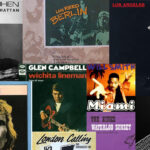
Songs About Cities and Urban Life, Part II
Songs and music give tangible form to the invisible by making the invisible audible, and therefore visible in our hearts and minds. Listening to music, we travel through the human soul. Hopefully, the following songs and music give ample space only to some of the best songs of all time.








